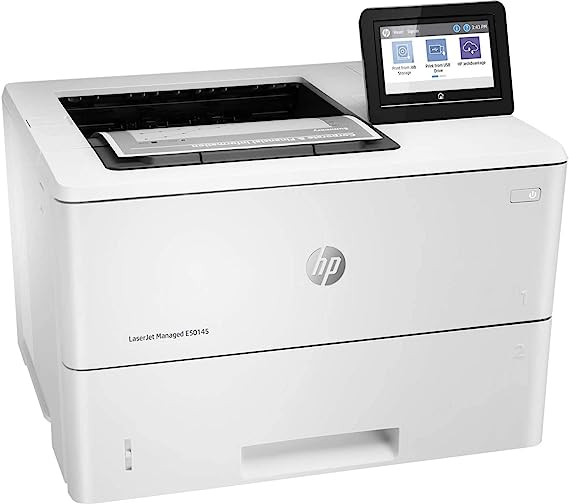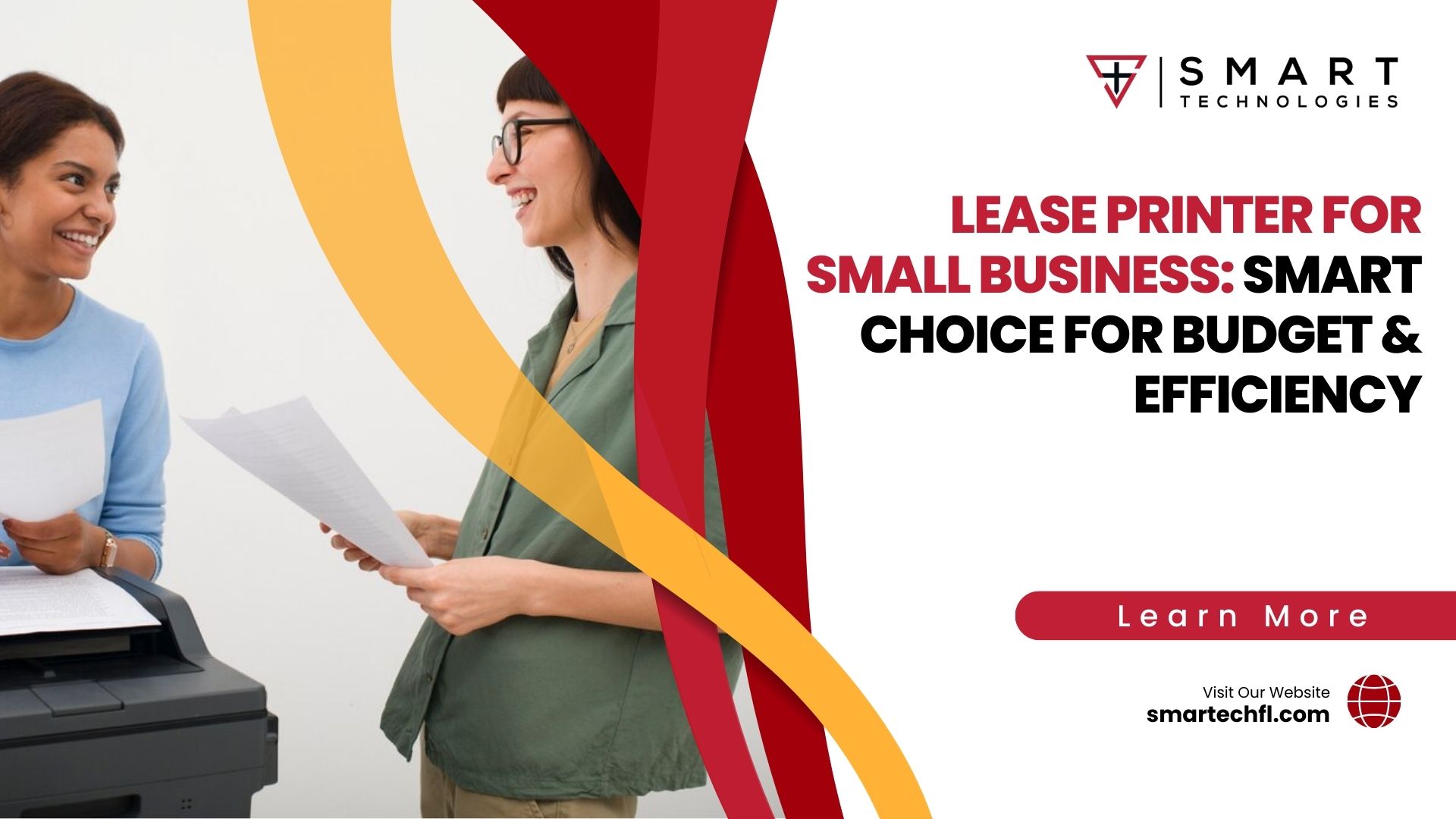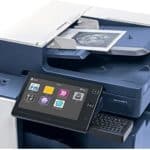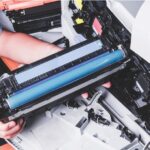Printer Leasing Costs: What’s Really Behind the Price Tag? Uncover the Mystery!
Introduction to Printer Leasing Costs
In the modern business environment, the need for efficient and reliable printing solutions is paramount. Whether it’s a small startup or a large corporation, having access to a high-quality printer is essential for smooth operations. But purchasing a printer outright can be a significant investment, especially for businesses that require multifunction devices capable of handling high-volume printing. That’s where printer leasing costs comes into play.
Printer leasing is a flexible and cost-effective solution that allows businesses to acquire the latest printing technology without the hefty upfront costs. By entering into a lease agreement with leasing companies, businesses can spread the cost of the printer over a specific lease period, making it more affordable and manageable. This approach not only frees up capital but also ensures that the business always has access to the latest printing technology.

Importance of Understanding Leasing Costs
Understanding the costs associated with printer leasing is crucial for making informed decisions. Explore Various Office Equipment Options to find the right fit for your business. The lease payment structure, service contract, and terms and conditions of the lease can vary widely between different leasing companies. Here’s why understanding these costs is vital:
- Cost Transparency: Knowing the detailed breakdown of leasing costs helps in budgeting and ensures that there are no hidden charges. It includes understanding the monthly lease payment, any additional service contract fees, and the overall cost over the lease term.
- Alignment with Business Needs: By comprehending the costs, businesses can choose the right type of lease, whether it’s a copier lease for a multifunction device or a specific printer lease tailored to their needs.
- Strategic Financial Planning: Understanding the costs helps in aligning the lease with the company’s financial goals. It allows for better planning, whether to buy or lease, and how to allocate resources effectively.
Unveiling the Mystery Behind the Price Tag
The mystery behind the price tag of printer leasing is often wrapped in complex terms and varying offers by different leasing companies. Get Professional Assistance for Your Printer Needs to navigate through these complexities. Unveiling this mystery involves:
- Analyzing Different Lease Types: There are various types of leases, such as Fair Market Value Lease and $1 Buyout Lease. Understanding these types helps in selecting the right lease term that suits the business.
- Evaluating Inclusions and Exclusions: Some leases may include a service contract for maintenance and repairs, while others might charge separately. Knowing what’s included and excluded in the lease payment is essential.
- Considering the Lease Period: The lease period, whether short-term or long-term, affects the monthly payment and overall cost. It must align with the business’s needs and future plans.
- Understanding the Office Copier Needs: Depending on the business’s requirements, leasing an office copier or a specific printer model can have different costs. Assessing these needs ensures that the lease agreement is tailored to the business.
Printer leasing offers a flexible and cost-effective way to access the latest printing technology. However, understanding the intricacies of leasing costs, including the lease term, type of copier or printer, and the associated service contract, is essential to make informed decisions. By unveiling the mystery behind the price tag, businesses can ensure that they choose the right lease agreement that aligns with their needs and budget.
What is Printer Leasing?
Definition of Printer Leasing
Printer leasing is a financial arrangement that allows businesses to acquire printers and copiers without purchasing them outright. It involves a contractual agreement with a leasing company, where the business agrees to make a monthly payment for the use of the printer or copier over a specified length of the lease. This arrangement provides flexibility and can be more cost-effective than buying a printer, especially for those who need a commercial copier or multifunction printer. Here’s a detailed look at what printer leasing entails:
- Cost Structure: The cost to lease an office printer or copier depends on various factors such as the type of machine, leasing rate, pages per minute capability, and the length of the lease. The average cost might vary, and there could be hidden fees.
- Flexibility: Leasing offers the ability to upgrade your lease or choose shorter lease terms. Depending on the business’s needs, one can lease equipment like color copier or specific office equipment.
- End of Lease Options: At the end of the lease, businesses may choose to purchase the copier outright, return the machine back to the leasing company, or upgrade to a new copier.
Comparison Between Leasing and Renting
While both leasing and renting provide access to copiers and printers without owning them, there are distinct differences. The comparison between leasing and renting includes:
- Commitment Period: Leasing typically involves a longer commitment, often ranging from 1 to 5 years. Renting, on the other hand, is a short-term arrangement, often monthly. The monthly lease payment in leasing is usually lower than renting.
- Cost Considerations: The cost to lease a copier or printer is often more predictable and can be more cost-effective in the long run compared to renting. Renting might incur additional costs and may not include maintenance or support.
- Ownership and Upgrade Options: Leasing provides options to purchase a copier outright at the end of the lease or upgrade to new equipment. Renting does not usually offer these options.
Types of Leases: Fair Market Value Lease, $1 Buyout Lease
There are primarily two types of leases that businesses can choose when they decide to lease an office copier or printer.
- Fair Market Value Lease: This type of lease offers flexibility and is often chosen for its lower monthly cost. At the end of the lease, businesses can buy the machine at its fair market value, return it, or upgrade. It’s suitable for those who want to keep up with the latest technology without owning the copier.
- $1 Buyout Lease: Also known as a capital lease, this option allows businesses to purchase the machine for $1 at the end of the lease. It’s more like a purchase agreement where the business ends up paying for the machine over time. It provides peace of mind for those who want to own the equipment without the upfront purchasing costs.
Printer leasing is a versatile and strategic option for businesses looking to manage their printing costs effectively. Whether leasing a copier or printer, understanding the definition, comparing it with renting, and knowing the types of leases helps in making informed decisions. It unveils the hidden costs of owning and provides options to align with the business’s needs and budget.
Advantages of Leasing a Printer
Cost-Effective Solution
One of the most appealing aspects of leasing a printer or copier is the cost-effective nature of this arrangement. The cost to lease an office printer or copier is often more manageable compared to purchasing the equipment outright. Here’s why leasing is considered a cost-effective solution:
- Spread Costs Over Time: Leasing allows businesses to spread the cost of a commercial copier or multifunction printer over the length of the lease. This means that instead of a large upfront payment, the business makes a predictable monthly lease payment.
- Avoid Unexpected Costs: Owning a printer can come with hidden costs of owning, such as maintenance and repairs. Leasing often includes these services, reducing unexpected costs.
- Flexible Leasing Rate: Depending on the lease agreement, businesses can choose a leasing rate that fits their budget. Whether it’s a color copier or a specific office printer, the leasing cost can be tailored to the needs.
Flexibility in Choosing Printers
Leasing offers tremendous flexibility in choosing the right printers and copiers for a business. The flexibility extends to:
- Type of Equipment: Whether it’s a Xerox machine, a copy machine, or a multifunction printer, leasing allows businesses to choose the equipment that fits their needs without the high purchasing costs.
- Upgrade Options: Leasing provides the option to upgrade your lease to a new copier or different model when technology advances or needs change.
- Lease Length: Businesses can choose shorter lease terms or extend the lease depending on their requirements. This flexibility ensures that the lease aligns with the business’s long-term goals.
Maintenance and Repairs Covered
One of the significant advantages of leasing over buying is that maintenance and repairs are often covered in the lease agreement.
- Regular Maintenance: Leasing companies often provide regular maintenance to ensure that the machine gets the necessary care. This includes cleaning, servicing, and ensuring that the machine is in optimal working condition.
- Repair Services: If the machine might break down or need repairs, the leasing company usually covers these costs. This eliminates the worry about finding a technician or incurring additional costs for repairs.
- Replacement Parts: Leasing often includes the cost of replacement parts if needed. This ensures that the business doesn’t end up paying extra for essential repairs.
Tax Benefits
Leasing a printer or copier can also provide significant tax benefits for businesses. The monthly lease payment is often considered a business expense, allowing for deductions from taxable income. This can reduce the overall tax burden and provide additional savings.
Improved Cash Flow
Leasing helps in improving cash flow by spreading the cost over several months or years. Instead of a lump sum payment to purchase a copier outright, businesses can allocate cash resources to other areas, such as marketing or inventory. This is particularly beneficial for startups or businesses with limited cash reserves.
Access to Upgraded Equipment
Leasing allows businesses to have access to upgraded equipment that they may not be able to afford if purchasing a new copier. Leasing companies often offer the latest technology and high-end models, ensuring access to the best equipment without significant investment.
Predictable Monthly Expenses
With a lease agreement, businesses know exactly how much it costs each month. This predictability makes budgeting easier and eliminates worries about unexpected costs that may arise with printer ownership, such as repairs or maintenance.
Improved Efficiency
Leased printers often come with advanced features that can save time and increase productivity. From automatic duplex printing to scanning and copying, leasing offers equipment that can enhance efficiency in the office space.
Environmental Considerations
Leasing can be more environmentally friendly than purchasing. When leasing, the company takes responsibility for the disposal of the equipment at the end of the lease, often refurbishing or recycling the equipment. This promotes sustainability and reduces waste.
Scalability for Business Growth
Printer leasing is scalable, allowing businesses to easily upgrade or add additional printers as the business grows. This ensures that the equipment aligns with the business’s expansion without significant investment in new printers and copiers.
The advantages of leasing a printer extend beyond mere cost savings. From flexibility in choosing equipment to maintenance coverage, tax benefits, improved cash flow, access to upgraded technology, predictable expenses, efficiency, environmental considerations, and scalability, leasing offers a comprehensive solution for businesses.
How Much Does a Printer Lease Cost?
Factors Influencing Lease Costs
The cost to lease a printer or copier can vary widely depending on several factors. Understanding these factors is essential for businesses to make informed decisions and find a lease that fits their budget and needs. Here’s a detailed look at the factors influencing lease costs:
- Type of Equipment: Whether it’s a Xerox machine, color copier, multifunction printer, or a simple copy machine, the type of equipment significantly influences the leasing cost. High-end models with advanced features will generally cost more to lease.
- Length of the Lease: The length of the lease plays a vital role in determining the monthly lease payment. Shorter lease terms may have higher monthly payments, while longer terms might reduce the monthly cost.
- Leasing Rate: The leasing rate is the interest rate applied to the lease, and it can vary depending on the leasing company and the creditworthiness of the business.
- Pages Per Minute (PPM): Printers with higher PPM capabilities often cost more to lease. The PPM requirement should align with the business’s printing needs.
- Additional Services: Some leases may include maintenance, repairs, and other services, while others might incur additional costs for these services. Understanding what’s included and excluded helps in assessing the overall leasing cost.
Examples of Monthly Leasing Costs
The monthly lease payment can vary widely based on the factors mentioned above. Here are some examples to illustrate the potential costs:
- Basic Office Printer: Leasing a basic office printer might cost around $50 to $100 per month, depending on the lease terms and included services.
- Multifunction Printer: A multifunction printer with scanning, copying, and faxing capabilities may range from $100 to $500 per month.
- Commercial Copier: For businesses needing a high-volume commercial copier, the monthly lease could be anywhere from $200 to $1,000 or more.
These examples provide a general idea, but the actual cost may vary based on the specific needs and lease agreement.
Understanding Credit Approval and Financing Options
Credit approval and financing options are essential aspects of the leasing process.
- Credit Approval: Leasing companies often require a credit check to assess the business’s creditworthiness. The credit score can influence the leasing rate and the overall cost of the lease.
- Financing Options: Different leasing companies offer various financing options, including traditional leases, $1 buyout leases, and others. Understanding these options helps businesses choose a lease that aligns with their financial goals and needs.
- Insurance Requirements: Some leases may require insurance coverage, and the cost of the insurance fee should be considered in the overall leasing cost.
The cost to lease a printer or copier is influenced by various factors, including the type of equipment, lease length, leasing rate, additional services, and credit approval. By understanding these factors and exploring examples of monthly leasing costs, businesses can make informed decisions that align with their budget and needs.
Leasing vs. Purchasing a Printer
Pros and Cons of Leasing vs. Purchasing
When it comes to acquiring a printer or copier for your business, the decision between leasing and purchasing can be complex. Both options have their unique advantages and disadvantages:
- Leasing Pros: Leasing offers flexibility in choosing printers and copiers, access to upgraded equipment, predictable monthly expenses, and potential tax benefits. It allows businesses to have the latest technology without the high upfront costs.
- Leasing Cons: Over the length of the lease, you may end up paying more than the cost of purchasing the equipment outright. There may also be conditions of the lease that limit customization or usage.
- Purchasing Pros: Buying a printer or copier gives you complete ownership and control over the equipment. There are no monthly lease payments, and the equipment can be sold or disposed of at your discretion.
- Purchasing Cons: The upfront cost to purchase a copier outright can be significant. Owning the copier also means responsibility for maintenance, repairs, and potential hidden costs of owning.
Impact on Budgeting and Technology Upgrades
The decision between leasing and purchasing also impacts budgeting and technology upgrades:
- Budgeting: Leasing provides predictable monthly expenses, making budgeting easier. Purchasing requires a larger upfront investment, which might strain the budget, especially for small businesses.
- Technology Upgrades: Leasing allows for regular upgrades to new copier models or technology, ensuring access to the latest features. Purchasing might result in using outdated technology as the equipment ages, as upgrading requires buying a new copier.
What People Also Ask
How Can I Get Out of a Lease?
Getting out of a lease depends on the terms and conditions of the lease agreement. Some leases may allow for early termination with a penalty, while others might be more rigid. It’s essential to review the lease agreement and consult with the leasing company to understand the options and potential costs.
What Are the Different Types of Leases?
The primary types of leases are Fair Market Value Lease and $1 Buyout Lease. Fair Market Value Lease offers flexibility at the end of the lease, while $1 Buyout Lease allows you to purchase the equipment for $1 at the end of the lease term. Each type has its unique features and benefits.
How Does Leasing Affect My Taxes?
Leasing can provide tax benefits as the monthly lease payment is often considered a business expense. This can reduce taxable income and potentially lower the overall tax burden. It’s advisable to consult with a tax professional to understand the specific implications for your business.
What Are the Environmental Implications of Leasing?
Leasing can be more environmentally friendly as leasing companies often take responsibility for the disposal or recycling of the equipment at the end of the lease. This promotes sustainability and ensures that the equipment is handled in an environmentally responsible manner.
Get Free Quote for Printer Leasing Costs.
Conclusion
The decision to lease or purchase a printer or copier is multifaceted, with various factors to consider. From the cost-effective nature of leasing to the flexibility in choosing equipment, maintenance coverage, and potential tax benefits, leasing offers a comprehensive solution for many businesses. On the other hand, purchasing provides ownership and control but comes with responsibilities and potential hidden costs.
Understanding the pros and cons of leasing vs. purchasing, the impact on budgeting, technology upgrades, and the answers to common questions can guide businesses in making informed decisions. Whether deciding to lease an office copier or purchase a copier outright, considering these aspects ensures a transparent and tailored experience.
In uncovering the mystery behind the price tag of leasing, businesses can find a solution that aligns with their needs and budget. Leasing may indeed be a viable and strategic option, providing peace of mind and a flexible approach to managing printing needs. The choice between leasing and buying is a significant one, and careful consideration of all factors will lead to a decision that supports the success and growth of the business.











